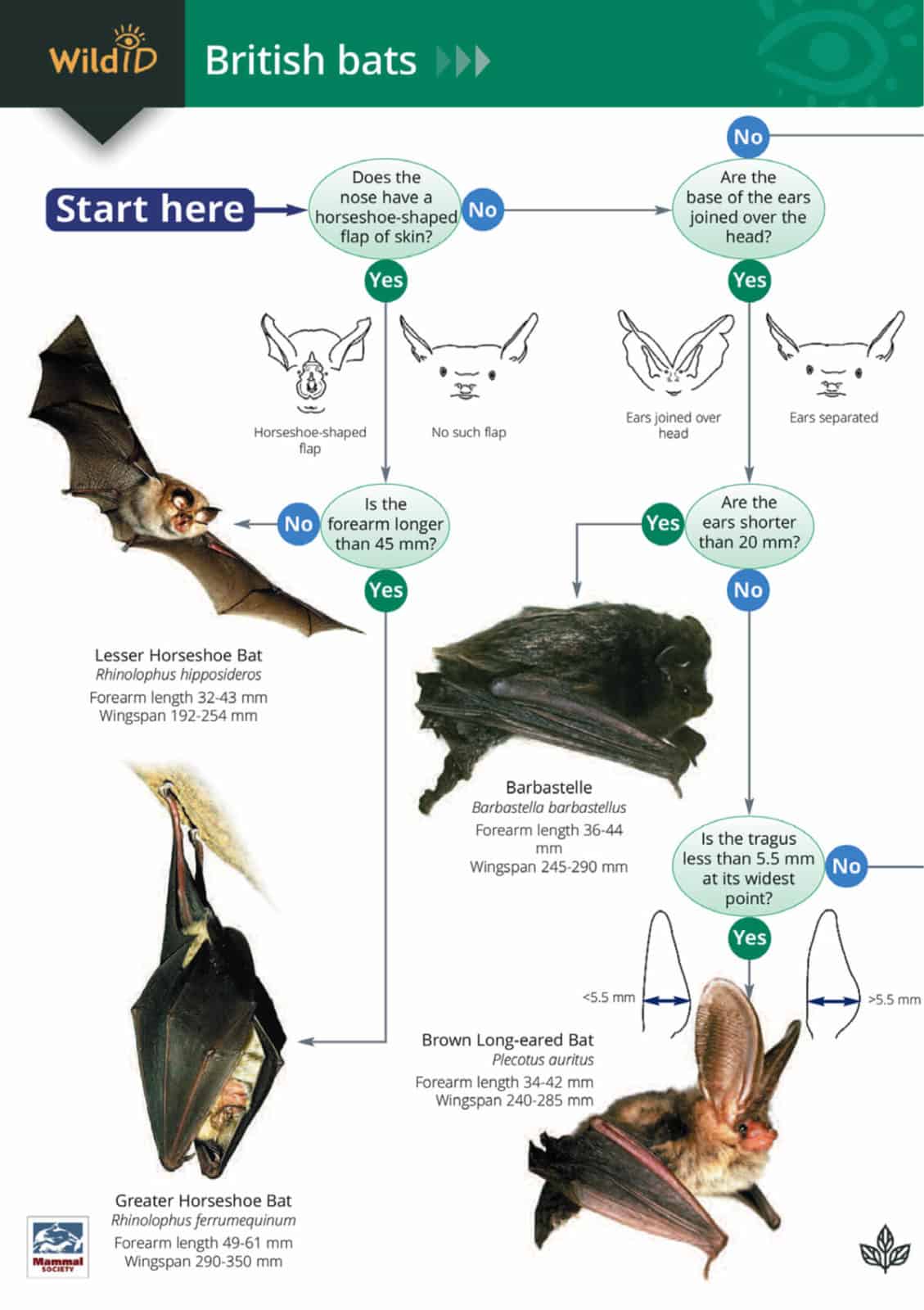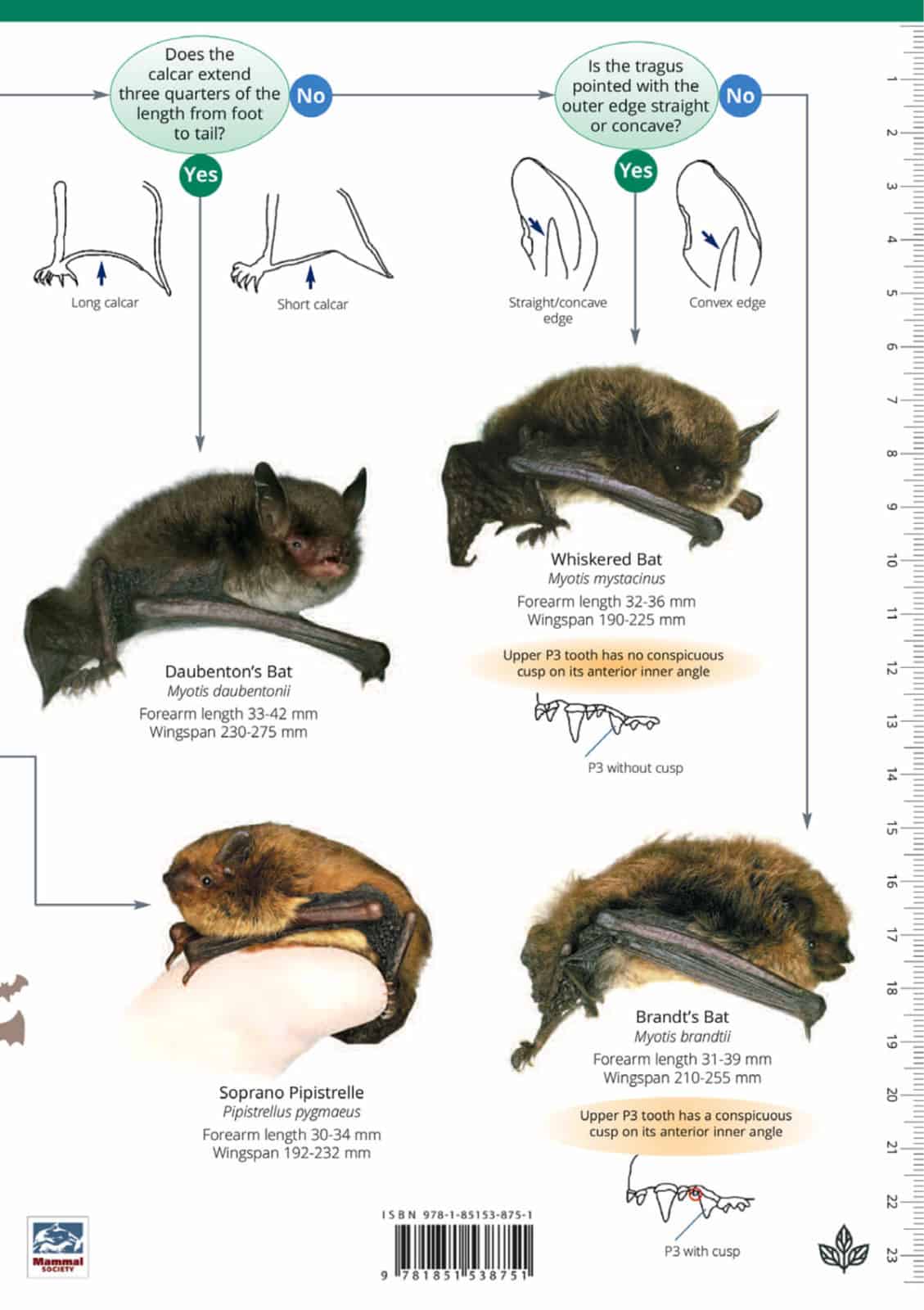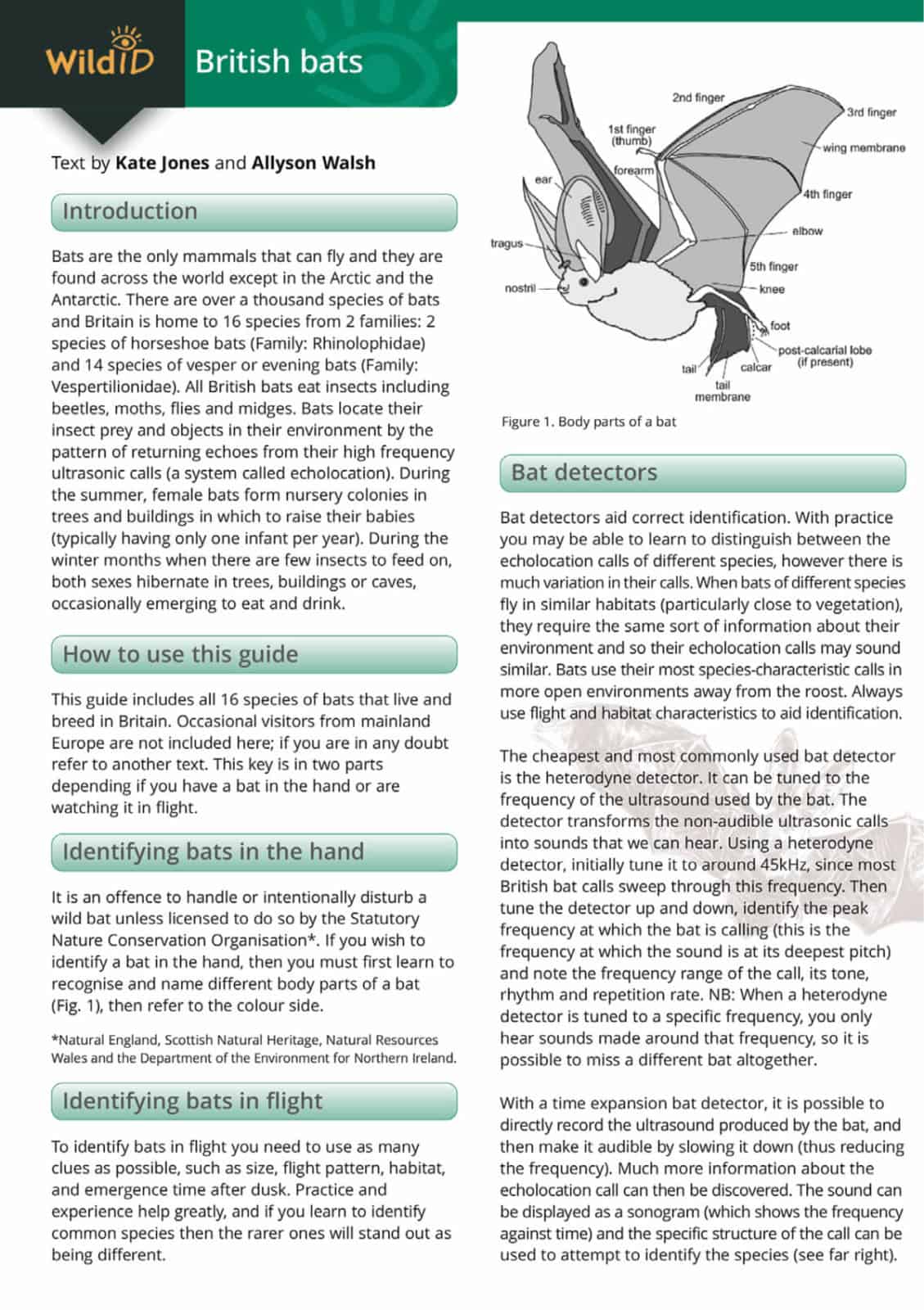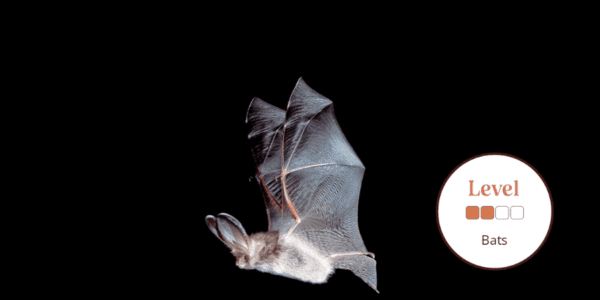Bats guide
The Bats Guide from the Field Studies Council is an identification guide to all 16 species that live and breed in Britain.
Our bat identification chart is 2 guides in one and consists of 8 fold-out pages featuring full-colour illustrations, making the identification of bats of Britain easier to achieve. species.
Firstly it is a name trail, great for identifying any bats found at rest during the day. Straightforward yes/no questions quickly guide you to the colour illustrations of each species. Secondly it is a guide to identifying bats in flight at night. Clues include flight pattern, emergence time after dusk, habitat and the location of the roost. Of course, a bat detector is the most reliable way to identify bats at night. This guide will be useful for users of both heterodyne and time expansion detectors.
Heterodyne detectors transform the ultrasonic calls to sounds that humans can hear. The guide describes the characteristic calls of each species.
Time expanison detectors record the ultrasonic calls. This guide gives the frequency range, duration range and sonogramof each species.
Bats are fascinating; the only mammals that can fly. Occurring worldwide, there are more than a thousand species. Britain is home to 16 species from 2 families: 2 species of horseshoe bats (Family: Rhinolophidae) and 14 species of vesper or evening bats (Family: Vespertilionidae). All British bats eat insects, including beetles, moths, flies and midges. They are well known for navigating and locating their insect prey by echolocation. aking high frequency ultrasonic calls and listening for the pattern of returning echoes.
During the summer, female bats form nursery colonies in trees and buildings in which to raise their young (typically having only one infant per year). During the winter months when there are few insects to feed on, both sexes hibernate in trees, buildings or caves. Declining British bat populations have led to increasing concern about their conservation. Since bats have a slow rate of reproduction, there are very vulnearble to disturbance and habitat loss.
The Bats Guide was co-created with the Mammal Society.
Our popular wildlife field guides measure 24.5cmx17.5cm and are extremely lightweight so are the perfect identification aid for popping in your bag when heading outside. All wildlife identification guides are laminated, meaning they are showerproof for use outside and can be wiped clean.





